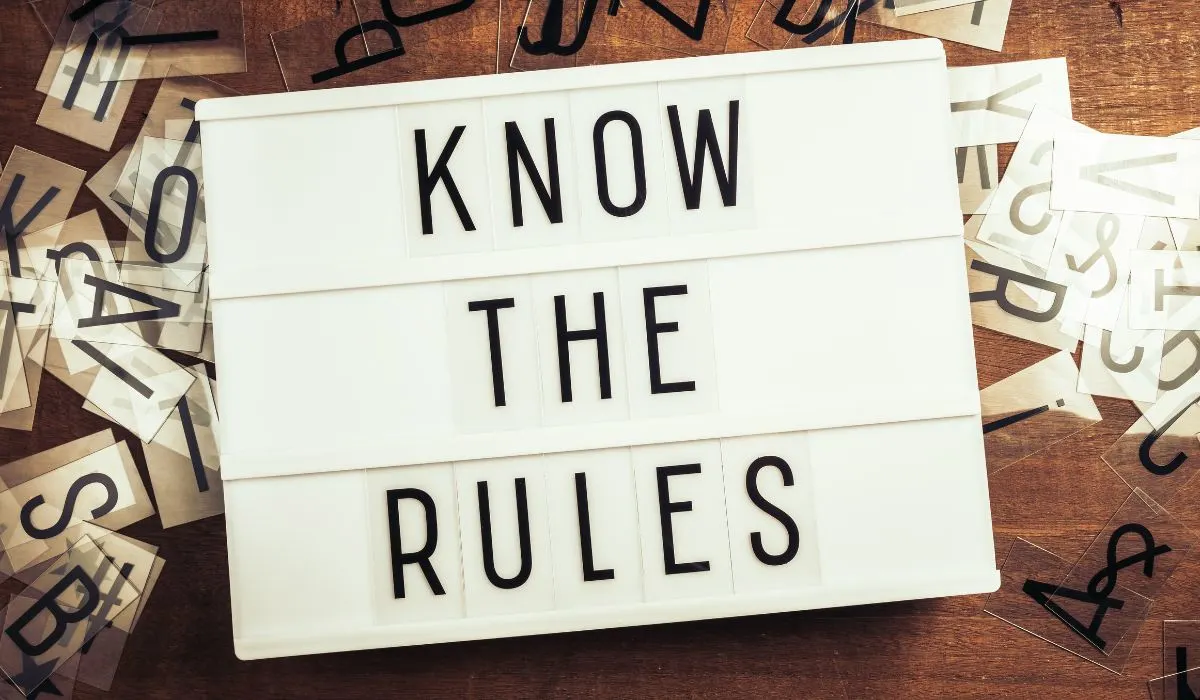
Whether you are cycling for exercise, commuting, or just for fun, safety is one of the most important considerations. Cycling road rules vary from state to state, and in countries all over the world, but many rules are applicable all over the country. It is important to learn all the road rules for cyclists so that you can remain safe while on your bike.
What are the most important road rules for cyclists? Wearing a helmet and ensuring your bicycle is up to safety standards are the first and most important rules to follow. You also need to yield to pedestrians and other traffic on the road where appropriate.
There are several other rules that you will need to be aware of and follow while riding a bicycle on the road. Read on to learn more about the road rules that you need to learn and follow as a cyclist.
What are the Most Common and Widely Shared Road Rules for Cyclists?
Cyclists on the road must adhere to all the same road rules as motorists, such as:
- stopping at zebra crossings
- giving way to pedestrians
- stopping at red lights
Beyond that, several rules are specific to cyclists.
#1: Yield to Pedestrians
Yielding to pedestrians and oncoming traffic is one of the most critical rules that ensure safety for everyone on the roads. You must follow any:
- stop
- give way
- other road signs
It is essential to also yield to any vehicles or bicycles that are moving slower than you until it is safe to pass.
#2: Ride With the Flow of Traffic
Ride in the same direction as the flow of traffic for safety. Many of the road rules followed by cyclists are also those followed by drivers, and this is one important example of this.
When traveling on the road, cyclists must travel in the same direction as other vehicles, which here in the United States means riding on the right side of the road, and riding as far right as possible where it Is safe to do so.
#3: Stay in The Bike Lane
In most US states, you are not legally allowed to ride on the sidewalk. This is a good rule to follow regardless of its legal status, however, because it is significantly safer for those on foot. Riding on the road also increases your visibility to drivers, keeping you safer as well.
#4: Use Hand Signals
Using hand signals is another important rule to help keep you safe. Vehicles have turn signals and brake lights to signal their intentions and movements on the road, while cyclists have none of these tools.
It is important for you to learn and use hand signals when:
- turning
- stopping
- making a lateral movement
There are different signals for each maneuver, so it’s important to learn and memorize these to prevent unnecessary collisions.
#5: Turn Safely
Turning safely is one of the most important things cyclists can learn to master.
First, learn how to signal your intention and then move to the left-hand side of the lane, always making sure to yield to any oncoming traffic to avoid collisions. The law requires you to continue cycling in a straight line and moving to the left-hand side of the lane only when it is safe to do so.
#6: Curb Cell Phone Use
It may seem obvious that you should not use your cell phone when cycling, but the frequency with which it occurs might surprise people. Looking down for even a second can lead to a collision, which is why laws regarding cell phone use for motorists also apply to cyclists.
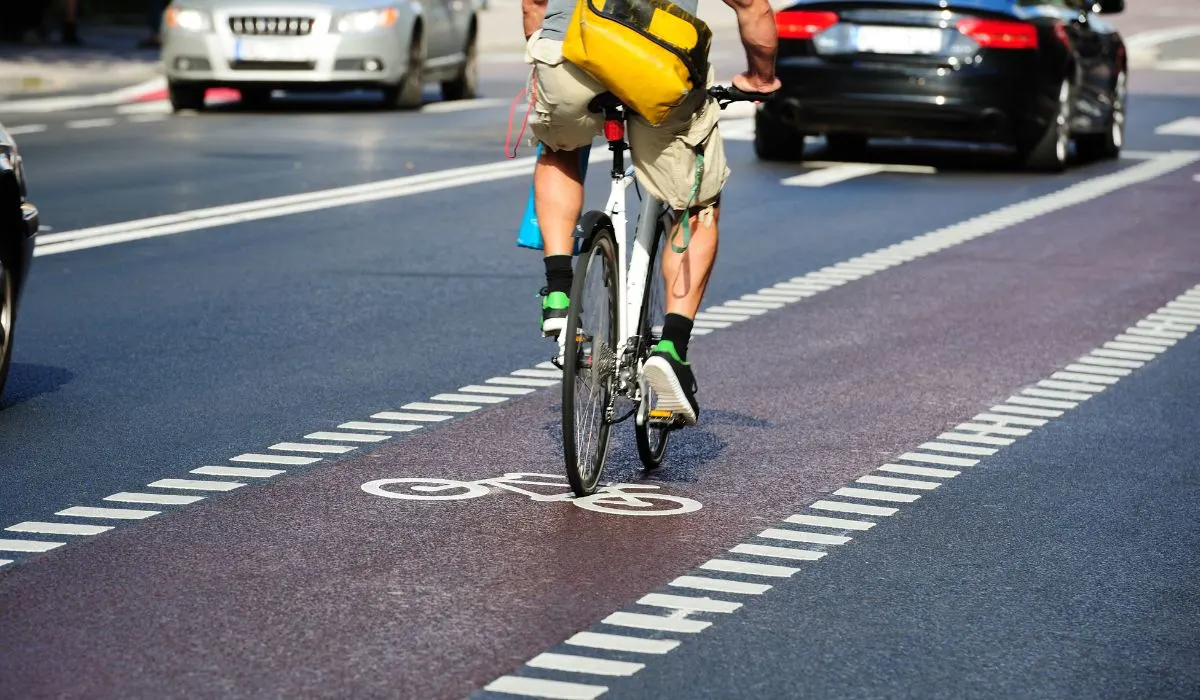
What Gear Do You Need to Stay Safe?
A helmet, like this one sold on Amazon, is a must if you want to stay safe as a cyclist on any road. They are required by law almost everywhere in the world.
Several different safety gear options may or may not be compulsory in your area, but are always a good idea to help make you visible and keep you safe.
Adding lights and reflectors to your bike is a great way to ensure nighttime visibility, and should be placed at the front end of your bicycle.
Another great tool for increased visibility at night is high-visibility clothing with reflective patches, like these vests which can easily be purchased on Amazon. Your body is the biggest and best surface on which to remain visible to passing cars.
A bike bell, like this one on Amazon, is another great addition, especially for commuters. You can easily ding at anyone who might be in your way, alerting them to your presence and ensuring the safety of cyclists and pedestrians.
Helmet mirrors, (Amazon link), are another way to keep yourself safe. Particularly if you are riding in an urban area, mirrors help extend your field of vision and avoid dangerous situations without having to turn your head. These can help you avoid:
- traffic
- pedestrians
- other cyclists
Which Cycling Laws Vary Between States?
Some cycling laws vary between states, and it is important to become familiar with each law in your state so that you are following the same rules as all other motorists and cyclists.
Helmet laws, for example, have different age requirements as well as requirements for operators and passengers.
Another important law to abide by is safe passing laws, which vary by state. This is the safe distance that motorists must provide cyclists riding on the road or using bicycle lanes when passing them in the same direction.
Bicycle lane use is another law that can vary. Some states require cyclists to cycle in bicycle lanes only when they are available. In others, it is legal to ride on the road with or without an available bike lane.
There are often special circumstances that allow for variations to this law. That is why it’s a good idea to check local council laws to find the rules for your area. You may, in some states, be required to use the far right lane at all times unless doing so is unsafe.
Cycling under the influence of drugs and alcohol is prohibited in most areas, as is riding with tested brakes which can allow the rider to stop in a hurry when necessary. Regardless of the law, remaining sober and ensuring that your bike is entirely functional is the safest way to ride.
Internationally, road rules can also vary somewhat. Hand signals may be different, so it’s important to check wherever you are that you are using the correct signals.
The side of the road that you ride on, similarly to the side of the road that you drive on, will also change from the right to the left in commonwealth countries such as:
- The UK
- Australia
- New Zealand
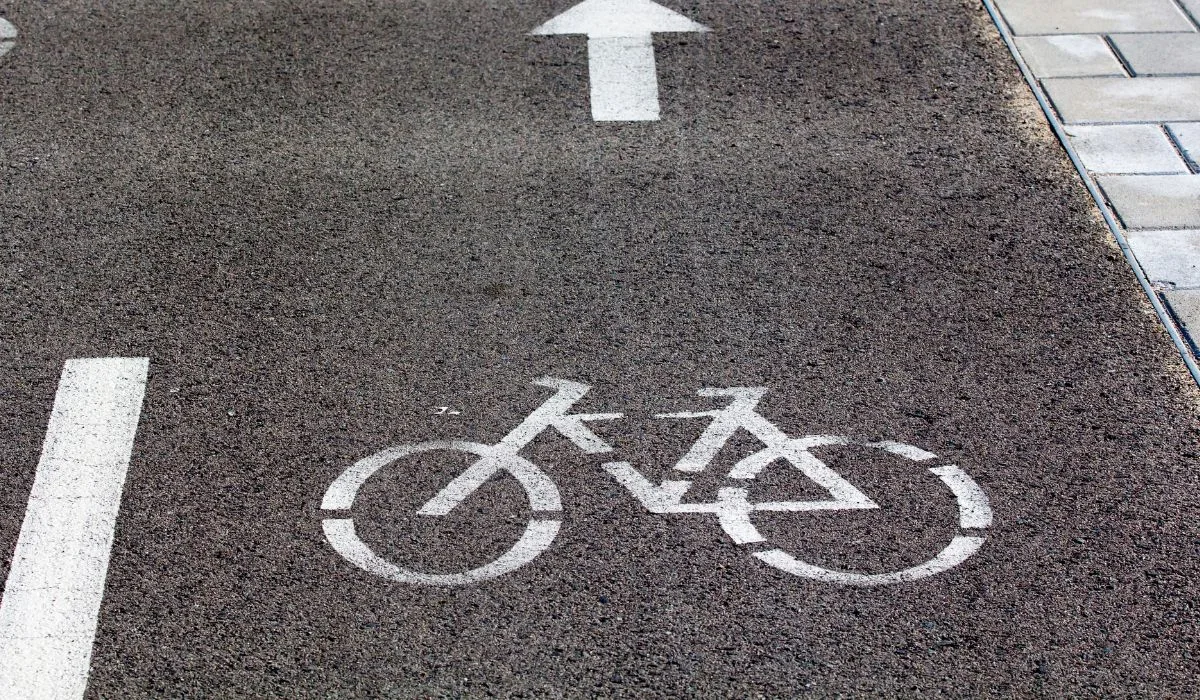
When It Is & Isn’t Ok to Ride in the Middle of the Road
Riding in the center of the lane is also commonly referred to as “taking the lane” or “taking primary position”, and is a fairly common practice among cyclists.
It is often done when cyclists need to pass parked cars with open doors, or when roads are narrow and cyclists need to prevent dangerous overtaking.
The law in most places supports the rights of cyclists to take primary position. It is often the safest way to ride, providing both cyclists and motorists with adequate views of the situation.
Cyclists can be at great risk from car doors opening suddenly or from motorists overtaking without adequate space to do so. Taking the lane is a great way to minimize these risks.
The problem with taking the lane can come in the ill-informed views of many motorists. Drivers often perceive cyclists as being in the wrong when they attempt to take the lane and fail to understand that the cyclist has the legal right to take the lane when necessary.
Taking the lane can be dangerous as it makes motorists angry and more likely to lash out in dangerous ways.
The Importance of Following Road Rules When Cycling
Failing to follow road rules has led to many tragic accidents. It is the responsibility of both cyclists and motorists to understand and respect road rules pertaining to cyclists. It is also important for cyclists to follow best practices to keep everyone on the road safe.
Understanding and following local road rules is the single most important way to remain safe while riding on the road.
Other common practices improve safety like ensuring your visibility and using safety gear, such as:
- wearing reflective clothing
- adding lights and reflectors
- helmet
- mirrors
- bike bells
Another common practice that is dangerous, and should be avoided is wearing headphones while riding your bike. Without the ability to hear what’s coming, you put yourself at a significantly higher risk of an accident.
There are many headphones on the market for athletic activity, but even these are best avoided for safety reasons.
When Can You Ride on Alternative Parts of the Road?
We have already talked about riding your bike in the middle of the road, which is allowed in any situation where taking the lane is the safest option. As well as moving to the left side of the lane, which is allowed when done safely to turn into a left-side road.
There are also rules pertaining to riding on the sidewalk. Because cyclists are not protected by a layer of metal, they are at an inherently higher risk of injury and death because of road accidents.
Cyclists are at risk of running down pedestrians when riding on the sidewalk, so must take extreme caution and adhere to the rules relating to road and sidewalk cycling.
The laws vary from state to state regarding whether you can ride a bike on the sidewalk. You can read more about the sidewalk cycling laws in your state in my article here.
If you are legally allowed to ride your bicycle on the sidewalk, you still need to exercise a high degree of caution. Ensure that you are being polite and giving way to pedestrians whenever necessary. Cyclists are guests on the sidewalk and need to behave respectfully toward other users.
If in doubt, the bike lane will always be the safest and most legal option to use. More use of bike lanes will also encourage local and state councils to invest more in cycling infrastructure to keep every road user safer.
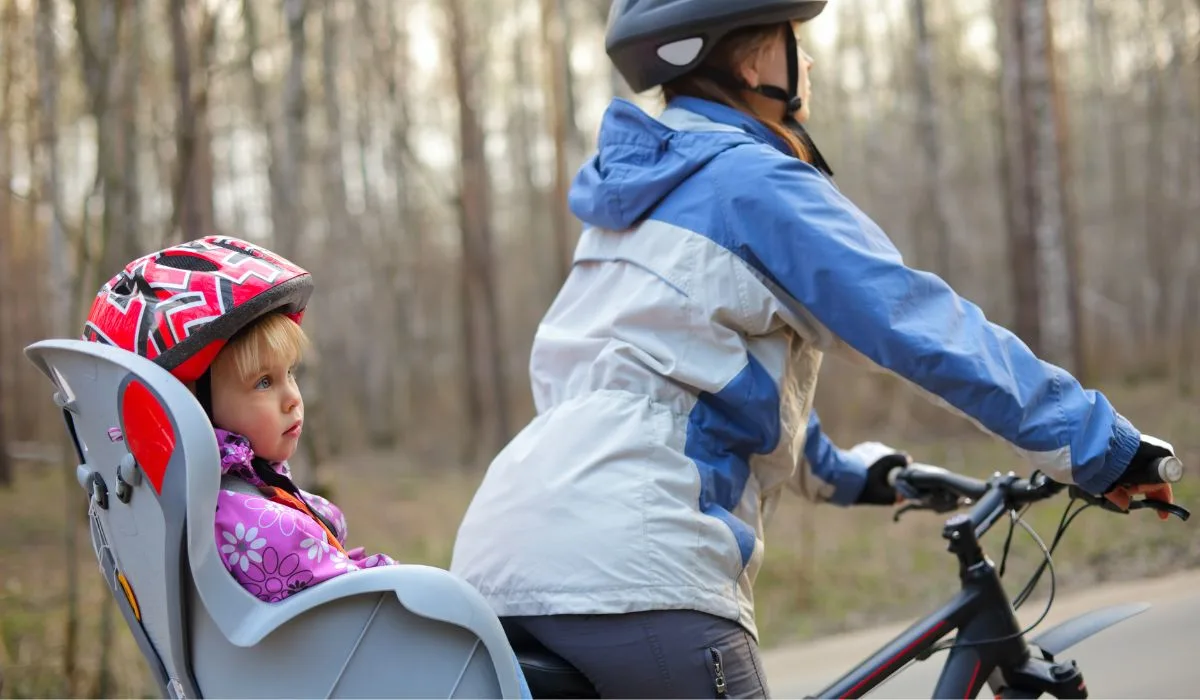
How Do the Rules Change When Cycling With Children?
A lot of people love to ride bikes with their kids. When kids are involved, there are additional rules and safety regulations that help keep the whole family safe.
The first of these is riding with passengers. Cycling with passengers is only allowed with children under seven years of age, and only in approved seats.
Kids also need to wear all of the same safety equipment as adults, even if they are not the ones peddling. Helmets are required by law, and other safety items such as high-visibility clothing are highly recommended, especially at night.
For maximum safety, make sure that kids have the correct size bike for their height so they can effectively maneuver and can plant their feet on the ground when necessary.
Kids should be able to straddle the top bar with both feet firmly on the ground, and there should be 1 to 3 inches between them and the top bar of the bike. Make sure that the bike is completely up to standard as well, and before your kids get going, test:
- brakes
- wheels
- other bike parts
Children also are not permitted in bike lanes and are instead encouraged to ride, at a slower speed, on the footpath. This is to help them stay safe while riding, but it does not preclude riders from being courteous on the footpath.
When riding with your kids, make sure to teach them the importance of being safe while riding. Set a good example by:
- wearing the correct safety equipment
- riding slowly
- giving way on the footpath
What are Some Other Risks of Cycling?
Not all risks of cycling are related to motorists. Here are some other risks that cyclists need to pay attention to while riding to prevent accidents for themselves and other motorists.
The first risk is rain, which may sound innocent, but is a serious safety concern for cyclists. Oil and dust combine with rainfall and make the road surface slippery by removing any traction between the bike wheels and the road.
Rain can make cycling more dangerous for everyone on the road, and should be avoided.
Puddles are another risk that should be avoided. Not only do they inhibit the bike wheel’s traction, but they can also conceal potholes. Since you cannot tell how deep a puddle is just by looking at it, and certainly not by riding quickly past it, it is best to maneuver away from them as much as possible.
Animals are also a significant risk on the road, as they can quickly dart out in front of all vehicles, including bicycles. Dogs, in particular, might also bark out of nowhere at passers-by, shocking and scaring cyclists into losing control.
In the fall, another risk to be aware of while cycling is tree leaves. This is the season when there are likely to be autumn leaves covering the ground, and while it may be beautiful, it can cause the wheels of your bike to jam.
The leaves can also become slick and slippery, as well as potentially covering deep potholes in the same way as puddles do.
Railway tracks are another risk factor because they can cause the wheels of the bike to become stuck. When you do have to cross railway tracks, try to choose a side that is less worn down, and make sure you pay attention to signs and lights letting road users know when trains are approaching.
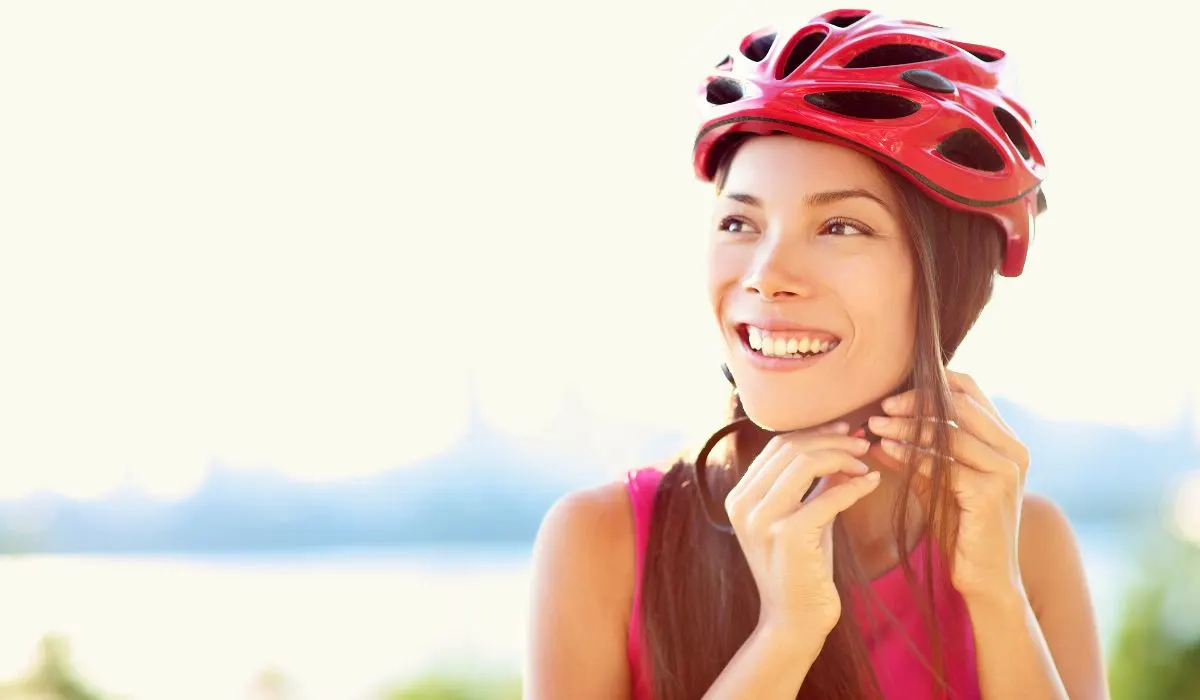
Conclusion
It is important to understand all the different hazards that come with being a cyclist on the road, to prevent any avoidable accidents and give yourself every advantage in exercising caution in every situation.
Understanding the rules of the road for cycling is the single most important way to make sure you stay safe on the road.
- Wear the right gear.
- Have the right safety equipment.
- Know where to ride.
- Use hand signals.
If you give yourself a solid understanding of the road rules in your area and maintain courtesy in the way you ride, you will put yourself at a much lower risk of an accident.
You might also be interested in:
